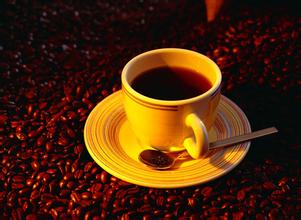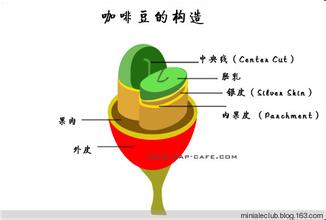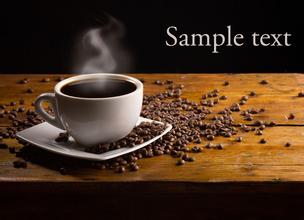Introduction to the recent Standard extraction time of Coffee extraction rate Formula
Introduction to the recent Standard extraction time of Coffee extraction rate Formula
Measuring the quality of coffee dates back to the 1950s. At that time, E.E., a professor in the Department of Chemistry at MIT. Lockhart conducted a series of surveys to study American taste preferences. In general, he surveyed many people who drank coffee and asked them about their preferences.
Lockhart published his research results with a "coffee cooking control chart", showing what the best coffee was in the minds of Americans at that time.
Years later, the American Professional coffee Association (SCAA) confirmed that American tastes had not changed much. For Americans at least, the perfect coffee is the coffee with an extraction rate of 18%-22% and a total solid solubility of 1.15%-1.35%.
Confused by technical terms? Please don't do this.
The extraction rate refers to the amount of coffee particles extracted from the original dry coffee residue. The total solubility of solids represents the actual percentage of coffee solids in a cup of coffee (commonly known as "cooking strength").
Put this information together and you get the coffee cooking control chart, in which the central area highlights the optimal combination of cooking intensity and extraction rate.
Our purpose of modulating coffee is to achieve perfection. Everyone seems to be bragging about their unique and mysterious process of achieving the best extraction rate, but we're here to tell you that it's no big deal.
Instead, the key is based on the golden ratio of 1 coffee to 17.42 parts of water. This ratio best takes you to the best area, and there is no unit limit, which means it's up to you whether you want to be in grams, ounces, pounds, quartz stones or tonnage units.
Therefore, if you want to prepare coffee with an extraction rate of 20% and a total solid solubility of 1.28%, you can use 30g of dry coffee and 523g of water as the base, and then adjust it on this basis.
At the same time, the concepts of extraction rate and total dissolution of solids are often mistakenly confused. It is important to figure out the difference between the two concepts.
Cooking strength refers to the amount of solid coffee dissolved in your coffee. And the extraction rate indicates the amount of extract you get from dry coffee. The point is that strong coffee has nothing to do with bitterness, coffee content or baking curve, only with the ratio of coffee to water in your cup.
The measurement methods of all these values were greatly innovated in 2008. A company called Voice Systems Technologies decided to apply the refractometer principle-- a refractometer is an instrument used to detect light waves refracted by particles-- to a project and developed a coffee concentration analyzer called ExtractMojo.
This instrument can accurately display the total solid solubility of coffee, and then compare it with the "coffee cooking control chart", you can not only scientifically but also pay attention to taste to prepare a better coffee.
Some purists object to using such a device to measure the quality of a coffee, which reminds us, as retired Marines, of a similar topic, which is the discussion of gun control.
Is there something wrong with the gun itself, or is it the way people use the gun?
Is there something wrong with the concentration analyzer, or is there a problem with the way people use this instrument?
These issues have triggered heated discussions, and the starting point of the discussion is good. But guns and concentration analyzers are tools, and like other tools, they can be used inappropriately.
Let's look at this in terms of the "fortress principle" (castledoctrine): just use a concentration analyzer quietly at home.
The basic principles of cooking coffee
Once you figure out what a good coffee is and how you measure it, it's much easier to learn to cook coffee.
The six basic principles are:
1. Choose high-quality coffee beans: please choose sustainable whole bean coffee, which will be baked within a few weeks after picking. And if you want to join the coffee revival movement thirdwave, which is now popular in the United States, choose lightly baked coffee beans so that you can really taste the unique flavor of coffee.
Deep baking will make coffee beans lose these flavors. We know it sounds strange to say, but deep-baked coffee beans are like a steak that is not bad but has been baked beyond recognition.
two。 Freshly ground coffee before cooking coffee: baked coffee beans are fragile and perishable. Coffee contains more aroma components than red wine, but these aroma components will deteriorate quickly after oxidation.
Freshly ground coffee before cooking coffee can retain the original taste of these ingredients. Want to make your self-tuning coffee taste better, this is the most important point.
3. Store coffee correctly: coffee beans that are not used immediately should be stored in an airtight container to avoid sunlight. There are many disputes in the coffee circle about whether coffee should be refrigerated or not.
We can compromise. Coffee beans that will not be used within two weeks can be refrigerated; beans that will be used within two weeks do not need to be refrigerated.
4. Match coffee and water correctly: a common mistake is that there is not enough coffee. We are reluctant to give up-it always feels like a waste to put an extra spoonful of coffee. But the golden ratio we mentioned earlier is definitely an important starting point for making a good coffee and the easiest way to achieve this goal.
5. Focus on skill: discussing how to complete each method of cooking coffee step by step is beyond the scope of this article, but there is a common fact behind all the methods.

Important Notice :
前街咖啡 FrontStreet Coffee has moved to new addredd:
FrontStreet Coffee Address: 315,Donghua East Road,GuangZhou
Tel:020 38364473
- Prev

Principle of dripping method in Coffee extraction-cleaning of Delong Coffee extractor
Principle of dripping method in coffee extraction-Delon coffee machine extractor cleaning now you should understand the perfect extraction
- Next

Growers will not use natural washing for ultra-high quality coffee beans.
Growers do not use natural washing for ultra-high-quality coffee beans. Some plantations that have not used honey treatment in the past have to use the tools at hand to process the coffee. Since raw bean processing plants in most regions, such as Latin America, Kenya and Ethiopia, used to use water to transport raw coffee beans, coffee beans lose some of their mucous membranes during transportation.
Related
- What is the meaning of lactic acid fermentation with coffee bean treatment?
- How to judge the state of foam by sound?
- How does the latte pull out the unicorn pattern? Come to get for a little trick to improve the flower pull!
- Will flower pulling affect the taste of the latte?
- Do you know the history of coffee?
- The difference between honey treatment and sun washing what is raisin honey treatment?
- What kind of milk can a novice use to make coffee foam to keep the foam longer? The correct method and skills of milking tutorial sharing
- Why do washed coffee beans taste sour? Flavor characteristics of washed Coffee
- Introduction to the skill of how to practice the size and height of water injection around the circle of hand-brewed coffee
- How do beginners practice coffee flower drawing from scratch?

